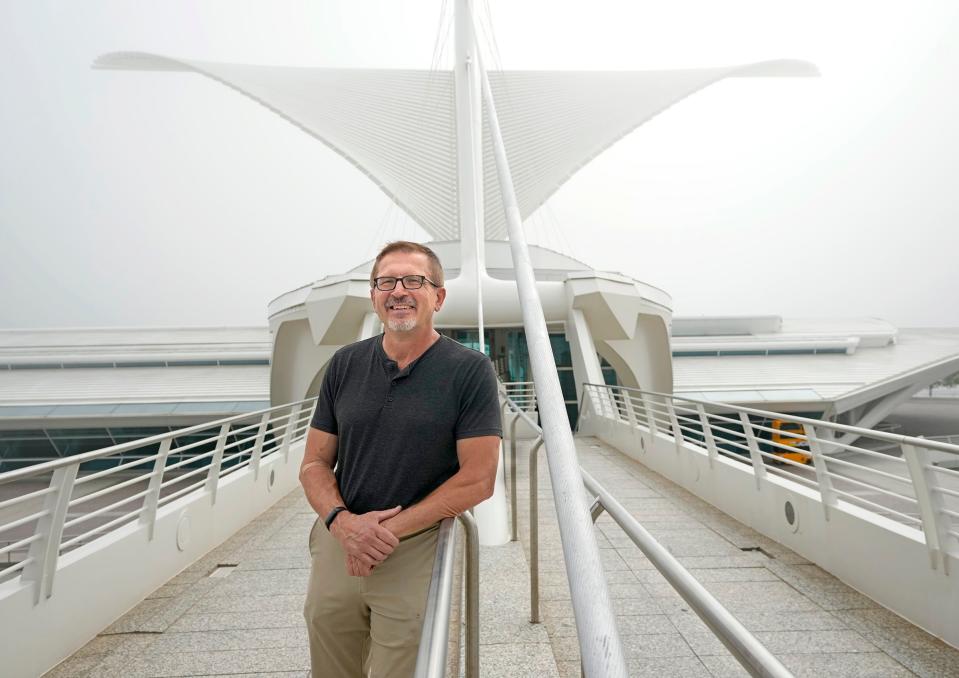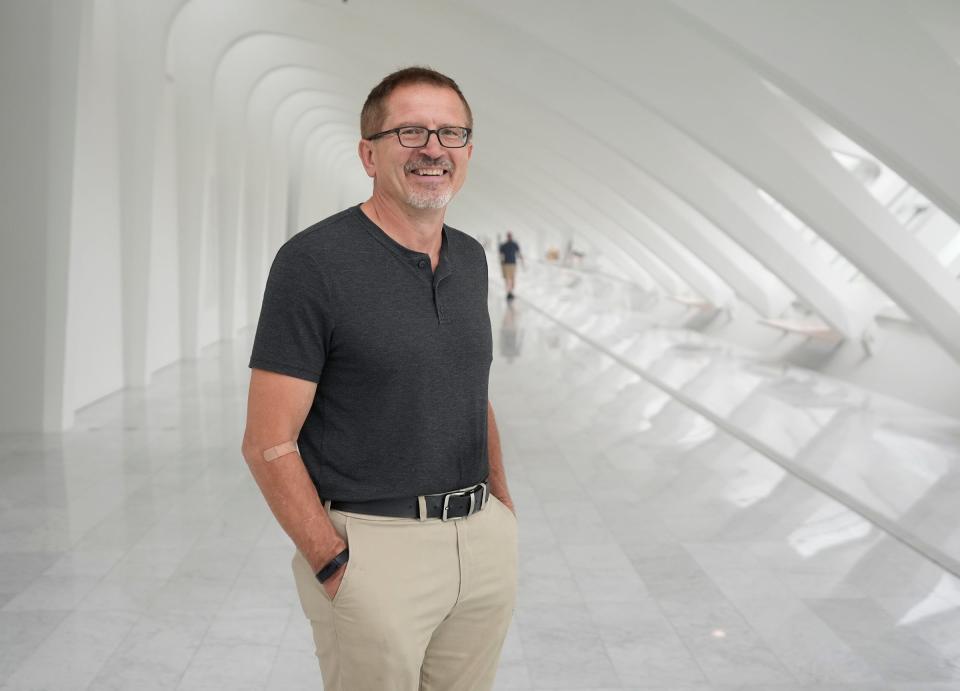They may look graceful, but it takes hard work to maintain the Milwaukee Art Museum's wings
The Milwaukee Art Museum’s largest piece of art doesn’t require an admission ticket to view. The museum’s moving brise soleil, better known as the “wings”, have become synonymous with the city and attract visitors from around the world.
When the Art Museum's addition, known affectionately across Milwaukee as "the Calatrava" in honor of Spanish designer Santiago Calatrava, opened in 2001, it was both an artistic and engineering marvel. Time magazine named it the best design of the year. And it's signature was, and is, the graceful wings, officially called the Burke Brise Soleil after Milwaukee developer John Burke and his wife Murph secured the naming rights.
More than two decades later, the brise soleil — French for sun breaker — has served as the backdrop for thousands of wedding and graduation photos. But the maintenance is ongoing, and as complicated now as the day it was completed.
Behind the maintenance of the wings is Dan Somers, Director of Campus Facilities and Grounds, who leads a team of five and a half (one part-time) workers. The team works with the HVAC, mechanical, electrical and structural engineering of the museum. Together, the team has more than 100 years of experience.

Somers said the 72 wings of white-painted steel operate on a complex hydraulic system that raises and lowers them. The hydraulic system uses pressurized fluid to create force which can be used with heavy machinery. The fin sizes range from 26 feet at the bottom to 105 feet at the top, meaning the wingspan spreads 217 feet at its widest point.
The wings’ system is all controlled by a computer, more specifically a programmable logic controller made by Milwaukee-based Rockwell Automation.
“This building is a little bit more complicated than others. There's a lot of one-off systems that you're not going to find anywhere else, like the brise soleil. There's not another one on the planet that I know of,” Somers said.
The wings can be programmed to open up to a year in advance for certain events, Somers said. Though on a typical day the wings open when the museum opens, then do an open-and-close “flap” at noon, and then close when the museum closes. It takes three-and-a-half minutes for the wings to open or close.
Weather affects opening and closing the wings
The wing operations can be suspended if the weather isn't accommodating. The wings have a lightning sensor that will automatically close the wings if they are open, or stop them from opening. The same thing will happen if the wind exceeds 23 mph for more than 15 seconds.
“The reason they do that is because when the wind gets above that speed, it puts stress on the building,” Somers said.

The only other reason the wings would not open would be a mechanical issue. To ensure that the wings can be online as much as possible Somers said the team is very aggressive with maintenance.
This starts with continuous testing of the programmable logic controller, structural inspections, pressure testing and ensuring the sensors on the wings work correctly.
The temperature has to be right for art
The wings aren’t the only piece of art that require specific and constant maintenance. To preserve the art within the museum, Somers said the building is kept at 70 degrees Fahrenheit and 50% humidity. There’s also a backup for every part of the HVAC system in the event something were to fail.
“We have to keep very tight tolerances as far as temperature and humidity because of the art. The humidification that we use in the buildings is very sophisticated because we have to have clean steam for the humidification,” Somers said.
The museum’s proximity to Lake Michigan also impacts the way the building is maintained; lake water is used for the air conditioning.
The building itself is on an automation system that works to control all of the mechanical and electrical systems.
“We’re always trying to come up with new ways to program things and change algorithms so that the building runs much more efficiently. And anytime you're saving energy, that's also a sustainability measure,” Somers said.
Somers just celebrated his 10th year at the art museum earlier this month. Part of his job also includes budgeting to ensure the building continues to be in good shape for the next 10 years.
While it's recommended to view the wings from the pedestrian bridge outside the museum, visitors are invited to explore the architecture from inside the addition, known as the Quadracci Pavilion, as well.
The museum only charges admission to enter the galleries, meaning portions of the museum are free to explore.
This article originally appeared on Milwaukee Journal Sentinel: How the Milwaukee Art Museum's Calatrava-designed wings are kept up

